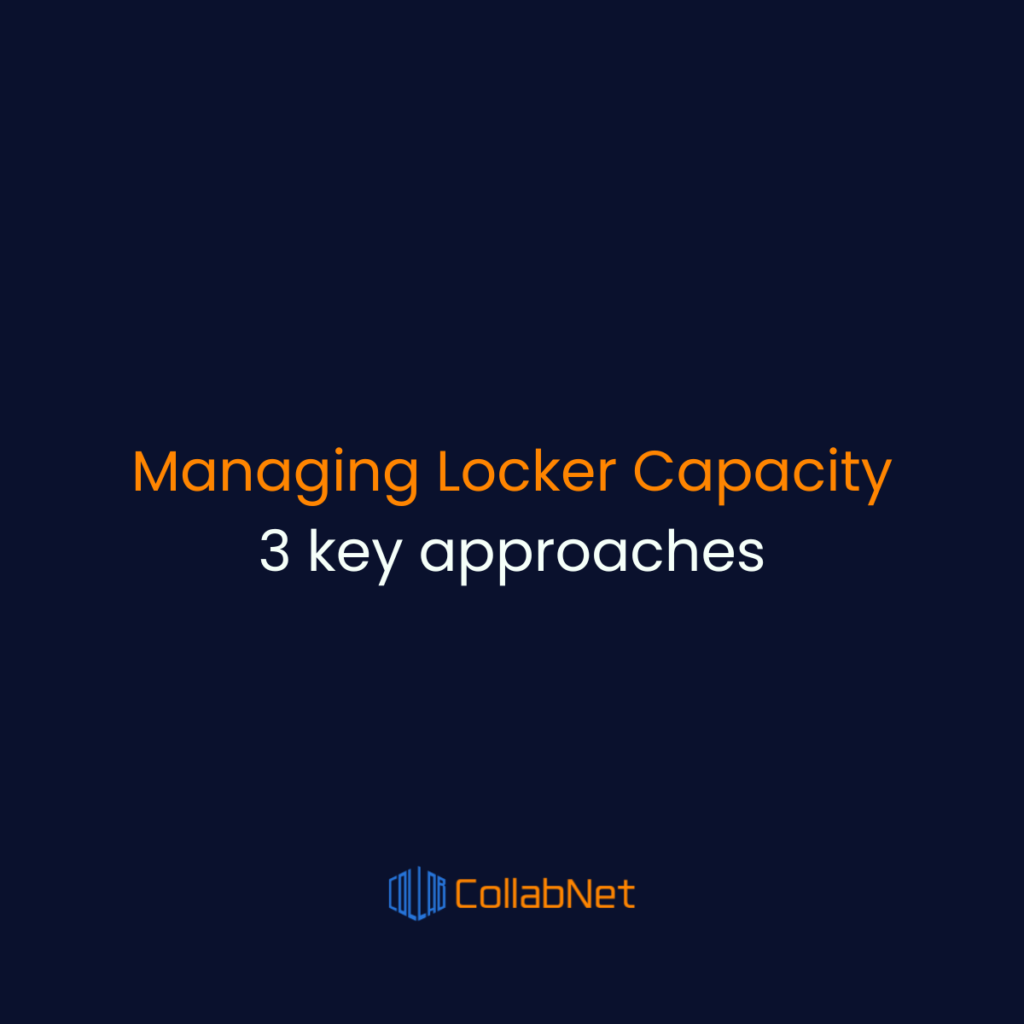
Parcel lockers have become essential infrastructure for last-mile delivery. However, managing locker capacity efficiently presents significant challenges for carrier and locker network operators.
This article examines three distinct approaches to parcel locker capacity management, each with unique advantages and limitations.
In the FIFO model, locker capacity operates on a “first come, first served” basis.
The first delivery company to reach the locker can potentially utilize all available compartments, regardless of how many other companies need to make deliveries to that location.
✅ Easiest model to implement
✅ Maximizes locker utilization during off-peak periods
✅ No reservation costs for delivery companies
FIFO model considerations:
⚠️ Creates unpredictable availability for carriers
⚠️ May force secondary deliveries when locker is full
⚠️ Potentially creates uneven service quality for end customers
With this approach, specific compartments or a percentage of locker capacity is permanently dedicated to individual delivery companies through contractual agreements.
✅ Provides delivery companies guaranteed capacity
✅ Simplifies delivery planning and routing
✅ Ensures service availability even during peak periods
✅ Creates predictable operating costs
⚠️ Companies must pay for reserved capacity regardless of actual usage
⚠️ May lead to underutilization during off-peak periods
⚠️ Less flexible for accommodating fluctuating volumes
This model implements a temporary reservation system where specific compartments of the locker are reserved once a parcel enters the sorting process. If delivery confirmation isn’t received within a predefined timeframe, the reservation automatically expires, and the compartment becomes available again.
✅ Balances guaranteed availability with efficient capacity utilization
✅ Adapts to actual parcel volumes in real-time
✅ Reduces wasted capacity through reservation timeouts
✅ Can prioritize reservations based on delivery urgency or other factors
⚠️ Needs clear policies for reservation duration and priority
⚠️ May create complexity for delivery route planning
⚠️ Requires robust communication infrastructure
It’s important to note that these capacity management approaches are not mutually exclusive. In practice, many networks implement hybrid models that combine elements of multiple approaches.
For example, a common hybrid implementation allows carriers to first utilize their reserved capacity, then access the general “public” capacity on a FIFO basis once their dedicated compartments are filled.
These capacity management models help guarantee necessary volume in cooperation with the network operator and ensure sufficient capacity when carriers have their data/needs available and are willing to plan together with the network operator.
While each model offers different benefits and challenges, the trend appears to be moving toward more dynamic capacity management approaches that balance guaranteed availability with efficient utilization.

Out-of-Home software solutions, backed by industry expertise.
| Cookie | Duration | Description |
|---|---|---|
| cookielawinfo-checkbox-analytics | 11 months | This cookie is set by GDPR Cookie Consent plugin. The cookie is used to store the user consent for the cookies in the category "Analytics". |
| cookielawinfo-checkbox-functional | 11 months | The cookie is set by GDPR cookie consent to record the user consent for the cookies in the category "Functional". |
| cookielawinfo-checkbox-necessary | 11 months | This cookie is set by GDPR Cookie Consent plugin. The cookies is used to store the user consent for the cookies in the category "Necessary". |
| cookielawinfo-checkbox-others | 11 months | This cookie is set by GDPR Cookie Consent plugin. The cookie is used to store the user consent for the cookies in the category "Other. |
| cookielawinfo-checkbox-performance | 11 months | This cookie is set by GDPR Cookie Consent plugin. The cookie is used to store the user consent for the cookies in the category "Performance". |
| viewed_cookie_policy | 11 months | The cookie is set by the GDPR Cookie Consent plugin and is used to store whether or not user has consented to the use of cookies. It does not store any personal data. |